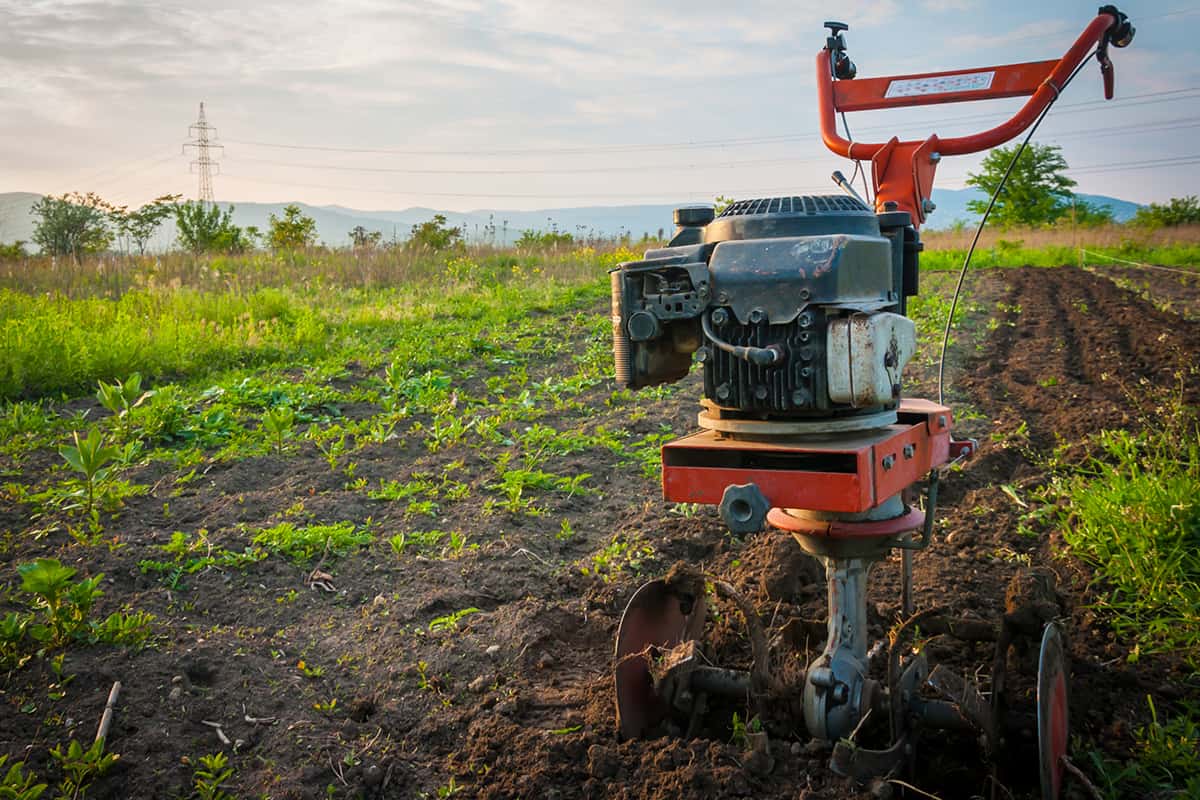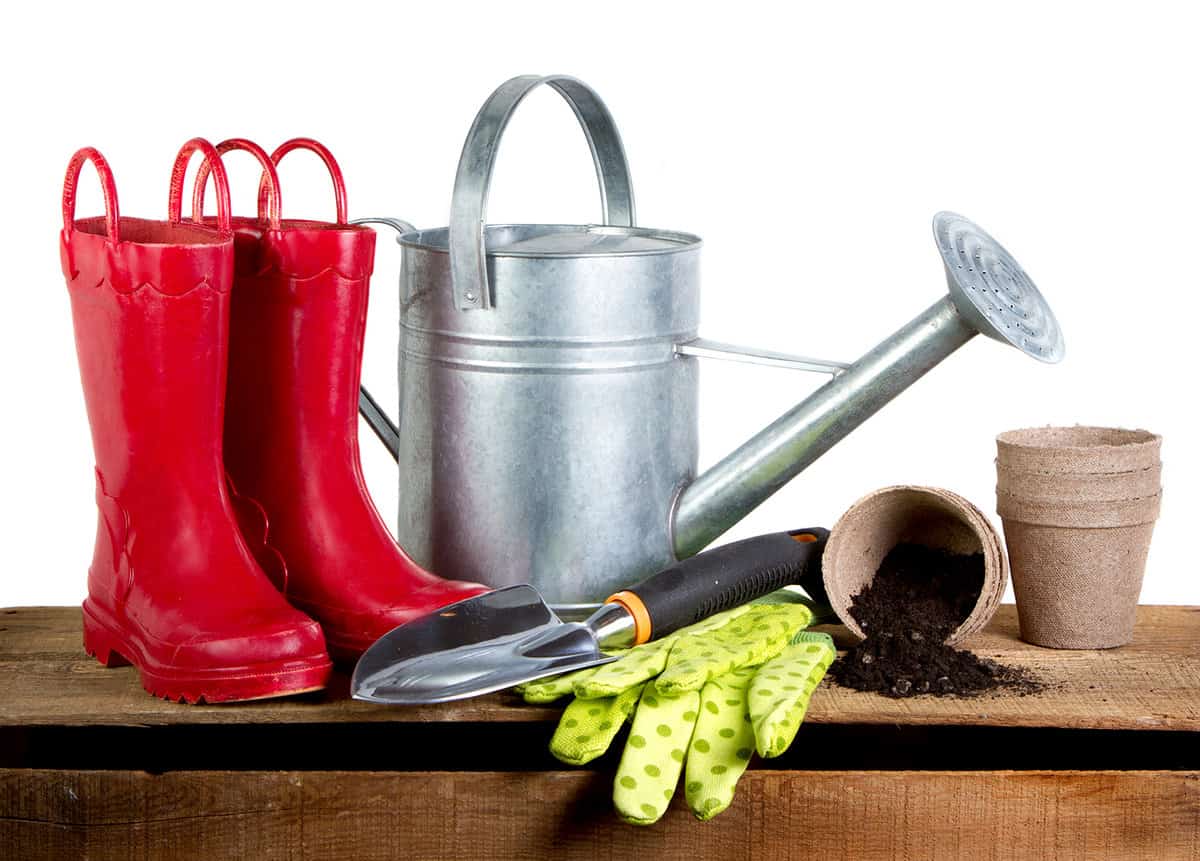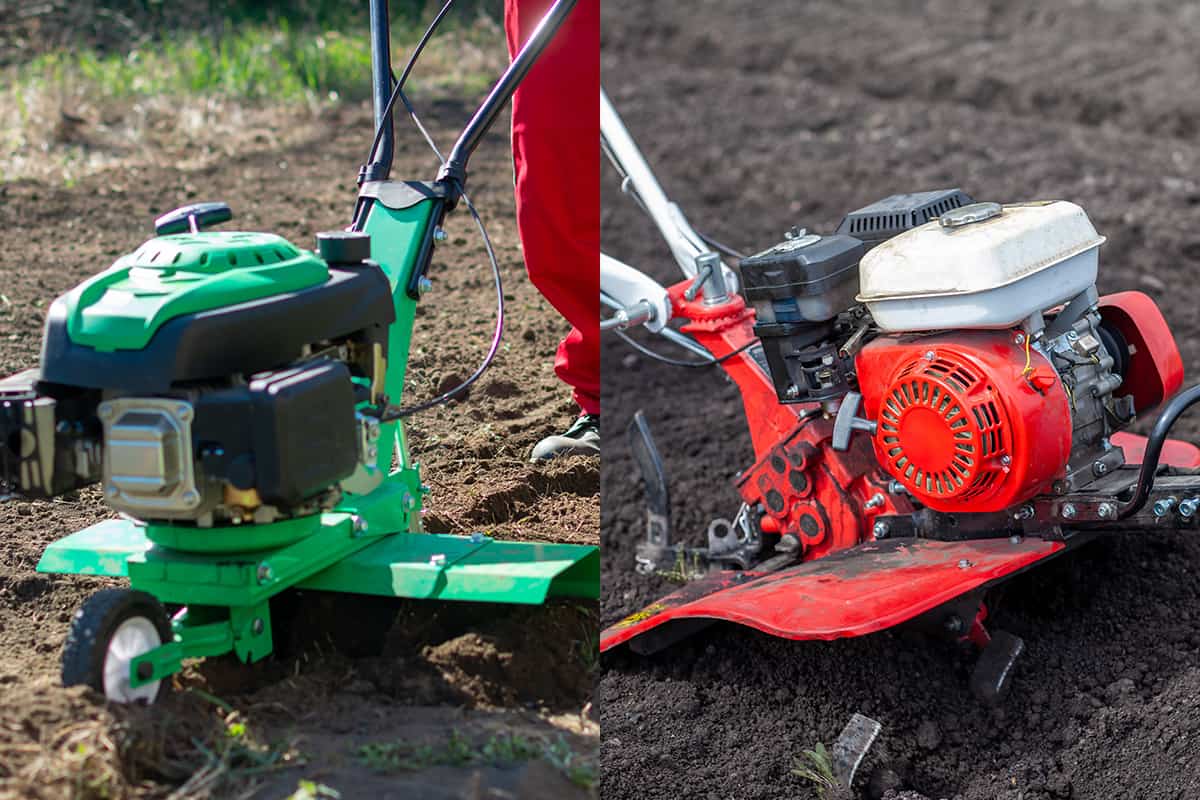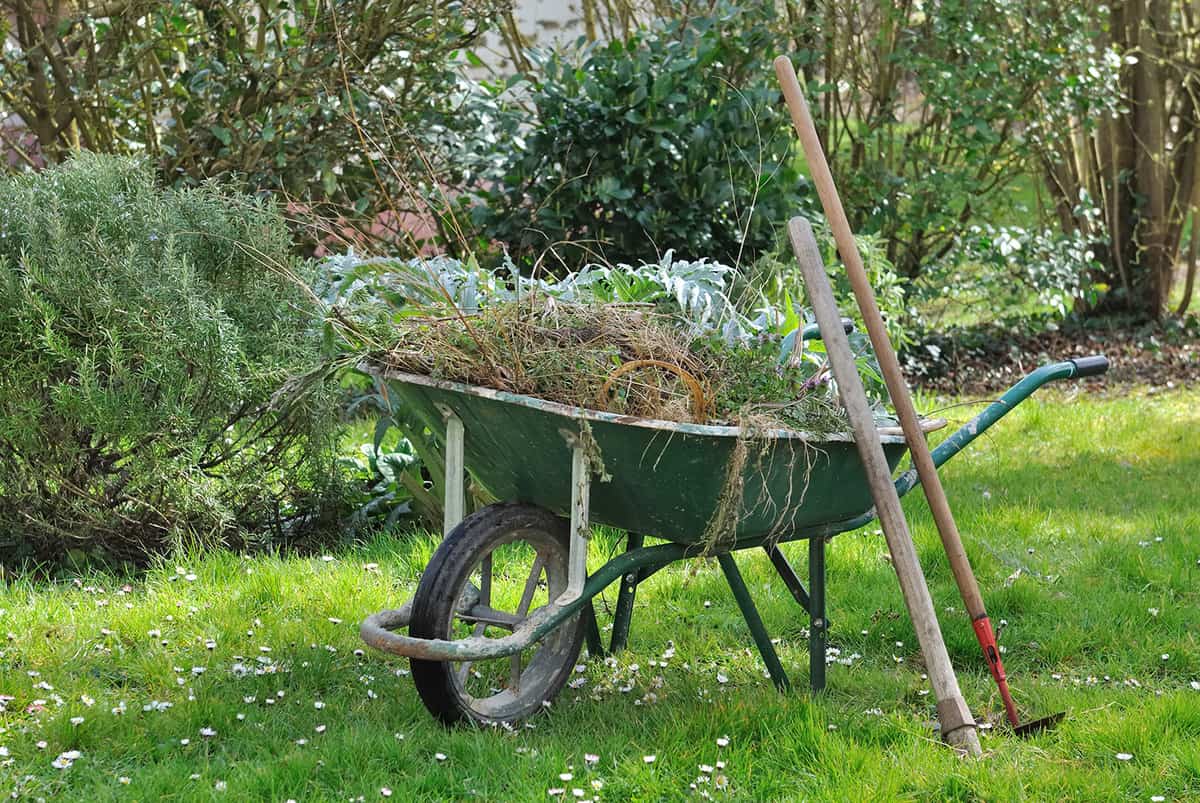Mowing weeds is not enough to eliminate them. You sometimes have to pull them out or dig them up. So, how do you remove weeds with a tiller? We have done our research and put together easy steps for you to follow.
Using a tiller is not an overly complicated task. Follow these easy steps to keep weeds out of the way.
- Prepare the area
- Soften the soil
- Wear protective gears
- Position the tiller where you will be digging
- Follow a pattern
- Separate the weeds from the soil
These are generally the steps for using a tiller as a weed remover. So, continue reading to get more details on each stage and the types of tiller you can use.
![Man working in the spring garden with tiller machine, How To Use A Tiller To Remove Weeds [Step By Step Guide]](https://gardentabs.com/wp-content/uploads/2022/12/Man-working-in-the-spring-garden-with-tiller-machine-scaled.jpg)
Use A Tiller To Get Rid Of Weeds
Weeds are enemies for farmers and gardeners. A tiller is an organic way of cultivating the soil and removing unwanted weeds simultaneously. It is an easy and efficient way to get rid of weeds, especially in large areas.
Using a tiller to eradicate weeds is not rocket science. Follow this guide and see a nicely tilled and weed-free garden.

1. Prepare The Area
Preparation of the area may involve removing high weeds. You have to cut them as low as possible to maximize the use of the tiller. It would be best if you also removed the rocks in the area. These rocks will delay the process and may damage the tiller.
2. Soften The Soil
Tilling the soil is easier if it's soft. Dry soil will also be difficult for the tiller. Water the ground enough to soften it but not too much, as it'll turn muddy.
Additionally, don't use an electric tiller while it rains, as the water may damage the machine. It may be best to till the area after the rain or when the soil is semi-dry.
3. Wear Protective Gears

When removing weeds by tilling, wear boots and gloves. Debris may fly using an electric tiller, so it is best to wear a protective eye shield. Remember, a tiller has sharp blades, so be careful when operating.
Be cautious and read the manufacturer's operating manual if you are unfamiliar with the tool. Nver leave a tiller unattended, and make sure to turn it off when not in use.
4. Position The Tiller Where You Will Be Digging
The next step is to ensure that the tiller is appropriately positioned. Set the blades down. Press the clutch lever and let the tines dig into the soil. Grip the handles firmly as the tiller may jump off the ground.
Once the weeds emerge and the tiller has reached the correct depth, steadily push it forward. How fast or slow you go depends on the tiller. Let the tiller work, and don't push it too hard.
After finishing one row, push the handle to raise the tiller off the ground. After that, turn it around and position the blades on the ground again. Press the clutch to start the blades and then push it forward.
Repeat these steps until you have the entire area completely tilled and weed-free.
5. Follow A Pattern
Next, guide the tiller in a straight line, so the weeds are removed evenly. Not only that but working in a straight line will also make sure that the soil is dug consistently.
6. Separate The Weeds From The Soil
The previous steps were pretty straightforward, but this last, more time-consuming step cannot be skipped. Leaving the weeds in the soil will not eliminate them for good. The weeds may regrow, and thus we will need to dig them up again.
Use a rake to break the soil and separate the weeds. Collect the weeds in a trash bag, and do not leave them on the ground. Pick up smaller pieces the rake missed to ensure the weeds won't grow back.
What Are The Types Of Tiller For Weed Removal
![Types of tiller for weed removal, How To Use A Tiller To Remove Weeds [Step By Step Guide]](https://gardentabs.com/wp-content/uploads/2022/12/Types-of-tiller-for-weed-removal.jpg)
When tilling weeds from the soil, choose a tiller with large blades. It prevents the weeds from breaking into tiny pieces, which will be difficult for you to collect. The tiller should tear the weeds off the ground and not grind them to pieces.
You can use different tillers to dig the soil and remove weeds.
Manual Tillers
These types of tillers are not as expensive as machine ones. Manual tillers need force to help break down the soil. You have to push it down to the ground like a shovel. The difference with the shovel is that a manual tiller is easier to use because it has wider handles.
Click here to see this manual tiller on Amazon.
Front-Tine Tillers
These tillers utilize the sharp tine on the front to dig into the soil. The engine is usually right above the tines. These types are suitable for gardens with a lot of rocks or gardens with compacted soil. A front-tine tiller works well on small gardens.
Click here to see this front-tine tiller on Amazon.
Rear-Tine Tillers
Opposed to the previously mentioned tiller, these types have blades at the rear end. Most professional gardeners use rear-tine tillers because it is heavy-duty and can take jobs for large portions of land.
Rear-tine tillers are also better than the front-end tiller because they can move backward and forward easily, allowing you to break the soil easily. Invest in these tillers if you're a landscaper or a serious gardener.
Click here to see this rear-tine tiller on Amazon.
Is A Tiller And A Cultivator The Same?

Are you one of those who are confused about tillers and cultivators? It is understandable, as these two are often used interchangeably. However, they are two different tools with dissimilar jobs.
A tiller can dig, break up the soil, and remove weeds. A cultivator is used to mix up already loose soil. Mixing fertilizer and compost is essential for the soil's health, and a cultivator is needed to get this job done.
You use a tiller before a cultivator, as the latter isn't suitable for breaking compact soil.
Reasons Your Lawn Is Full of Weeds

It is not enough to dig out weeds whenever you see them. Knowing what causes weeds to grow or grow faster than usual is also essential.
Not Enough Water
Weeds grow better than grass when you don't water the latter enough. When grass dries and dies, the weeds will take over.
Unhealthy Soil
Soil lacking nutrients is bad for grass too. As grasses and weeds compete for survival, weeds will more likely stay alive in unhealthy soil. In this case, you should add organic matter to improve the soil.
Compact Soil
Very tight soil kills grass, which later lets weeds grow. In this case, you should aerate the ground by using a tiller.
Wrong Herbicide
There are different herbicides on the market. Some only dry out the weeds' leaves, making you think you've killed them. However, they'll regrow after some time. There are systemic herbicides that kill the weeds from the roots leaving no chance for survival.
Moreover, it is also important to note that the timing of applying the herbicide is essential. Do not spray herbicides before weeds grow, as it's futile. Also, if it rains or snows at least two days after you spray the herbicide, you need to re-spay or re-apply the herbicide. Because the snow and rain have most likely washed it out, rendering the herbicide ineffective.
Click here to see this herbicide on Amazon.
Letting The Weeds Grow
If you see small weeds growing, pull them out while you can easily do so. It'll be problematic later on when they already have deep roots.
Final Thoughts
Unwanted weeds often grow magically in lawns. Getting rid of them before they take over and killing the other plants you have is important.
A tiller is an excellent tool to help remove weeds that you cannot easily pull out by hand. Use the comprehensive steps in this post.
Remember to remove and collect the weeds after tilling. Don't mix them with the soil or allow the weeds to dry on the lawn or garden because they will grow back.
Now you are equipped with more knowledge for tending to your land.
Please check out these other articles.

![Tiller machine on the garden, How To Use A Tiller To Remove Weeds [Step By Step Guide]](https://gardentabs.com/wp-content/uploads/2022/12/Tiller-machine-on-the-garden-scaled.jpg)
![Man weeding with a tiller machine the garden, How To Use A Tiller To Remove Weeds [Step By Step Guide]](https://gardentabs.com/wp-content/uploads/2022/12/Man-weeding-with-a-tiller-machine-the-garden-scaled.jpg)
![Man cultivates the ground in the garden with a tiller, How To Use A Tiller To Remove Weeds [Step By Step Guide]](https://gardentabs.com/wp-content/uploads/2022/12/Man-cultivates-the-ground-in-the-garden-with-a-tiller-scaled.jpg)
![Garden with tiller machine, How To Use A Tiller To Remove Weeds [Step By Step Guide]](https://gardentabs.com/wp-content/uploads/2022/12/Garden-with-tiller-machine-scaled.jpg)
![Garden tiller on the field, How To Use A Tiller To Remove Weeds [Step By Step Guide]](https://gardentabs.com/wp-content/uploads/2022/12/Garden-tiller-on-the-field-scaled.jpg)



